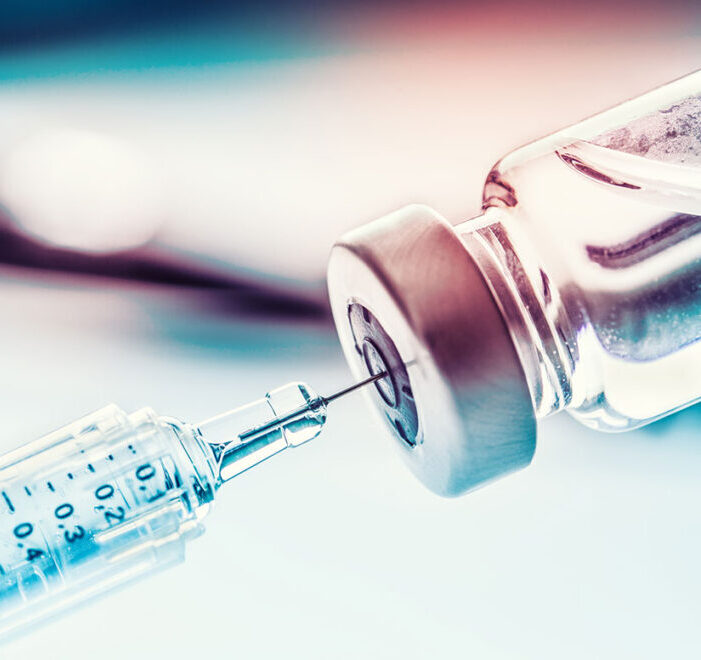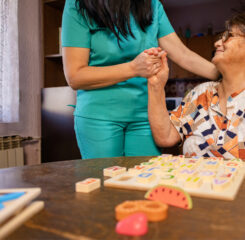Interview with Dr. Ronald Nahass – December 22, 2021
Dr. Ronald Nahass, an infectious disease physician at RWJ University Hospital, clinical professor of medicine at Rutgers, and president of ID Care, joined the December 22, 2021 LeadingAge Coronavirus Update call. He responded to questions from Ruth Katz and from callers. Here is a summary of the conversation:
Q: Omicron has taken over so quickly. Why is the omicron variant so different from delta?
A: The pace of the omicron spread has been amazing- so many people are getting infected so quickly. The doubling time is at most 2-3 days and that definitely defines “exponentially”. It has the highest transmissibility we have seen, and is approaching the level of contagion of measles which is one of the most contagious diseases known to humans. Omicron is easily passed from person to person.
Q: You mention that omicron is better at evading the immune system. What does that mean?
A: Our immune system helps protect us from infection. It turns out that the omicron variant, because of its many mutations, is more able to evade the body’s immune response whether that response arises from vaccine and/or infection. Prior infection, even with the delta variant, doesn’t give much protection against omicron, nor does two doses of 2 vaccines. A third booster dose is essential.
Q: Is that because of waning immunity over time?
A: Two doses of vaccine is not protecting people over time in the way we would want to see. People who have had two doses are getting COVID. People who have had J & J are essentially unvaccinated at six months. At six months people vaccinated with two doses of the mRNA vaccines are at best 50% protected against delta. It is far less than that with omicron. We need to recognize the level of waning immunity with omicron and emphasize boosters.
Q: We have been hearing that infections with omicron are less severe. Can you speak to virulence?
A: Let’s do a math equation – if omicron is 50% less virulent but 10 times as contagious and let’s say 20% of patient who had delta were admitted to the hospital. So, if omicron is half as virulent and 10 times as contagious – you are still going to have way more people in the hospital. We need to prevent infection to keep from overwhelming the health system.
Q: This all sounds very concerning, is there a way we can modify transmission?
A: There certainly is. Here is the hierarchy of actions we should take:
- Boosters – third doses for everyone (including people who have had J & J. People must be boosted. It is likely that soon, all vaccines with require three doses.
- Tests – get tested prior to gathering – on the day, if possible. Visitors to nursing homes and assisted living communities should test themselves.
- Ventilation – open a window, be in a big space where people can be physically distant.
- Be cautious – if you have mild symptoms, don’t visit, don’t gather – especially because if you are vaccinated your symptoms may be mild.
- Hand hygiene – clean hands before and after everything.
- Masking – when you are out in public wear a mask.
If we do these things consistently, “we will make a difference in the transmissibility”
Q: What can you tell us about natural immunity? We are hearing things like, “I’m not vaccinated and I have been working in health care for the past two years and haven’t gotten sick”, or, “I was vaccinated and then I got COVID – aren’t I super-immune?”
A: As we have watched omicron, we have seen people get infected who have had prior COVID infection. Getting vaccinated after infection is the best immunity – but be sure to get vaccinated and boosted. If you haven’t been vaccinated and haven’t gotten COVID yet, you either have had good luck or an asymptomatic infection. There is no such thing as inherent natural immunity.
Q: With the omicron variant, can you be carrying the infection and transmitting it, even if you have no symptoms?
A: Yes, and there is an even greater chance with people who are vaccinated because they may be less likely to be symptomatic. Hence the need for a variety of safety protocols like testing.
Q: As people are trying to figure out what to do for the holidays, what is your advice?
A: I think you can gather if you are smart – and that means accepting the reality of the omicron surge. As we discussed earlier, there are things you can do to limit the risk, and you need to do them. Sometimes inertia or concern about people’s feelings keeps us from doing that. For example, my family will be gathering for the holidays, and we have set the ground rules that everyone must be boosted, everyone must be tested that day, and we will have windows open, and take other precautions. The challenge is following through and making the difficult decisions to turn people away if they don’t comply.
Q: What about if a person under five will be there?
A: We don’t penalize small children because they can’t be vaccinated, so we make sure to test them.
Q: I know you don’t have a crystal ball, but how is the first quarter of 2022 going to look? What is your best guess right now (and we won’t hold you to it)?
A: January is going to be hell – fasten your seatbelts– both because of staffing issues and case issues. Omicron is burning so hot and cases are going up so quickly, that I am hopeful that it will run out of fuel quickly and maybe peter out a bit by the end of February or March. Hopefully, we will be coming out of this omicron fire. What we can’t predict is whether there will be another variant coming along.
We will get through this challenge emotionally, physically, and mentally. We are all experiencing it minute by minute in real time, especially, with the magnification of social media. We have to go through this wave by wave, and we will get through it.
The good news of the day is that Paxlovid was approved by the FDA today. This drug, which can be taken orally, improves outcomes for people who have early COVID, including the omicron variant. Hopefully we will get this out to pharmacies quickly and we will give it just like we give Tamiflu.
Q: Are rapid antigen tests effective in detecting omicron?
A: Yes, they are. Those tests don’t for spikes so it can recognize the virus. The Quickvue and Binaxnow tests will recognize omicron COVID without a problem.
Q: Will people need three shots every year?
A: We are learning in real time, so it is difficult to know. Maybe this will be an annual vaccine along with our flu shot to address any new variant – but that’s just speculation.
Q: If a person is fully vaccinated and then gets COVID how soon can they get a booster?
A: They should fully recover and wait 30 days and then go get booster.
Q: How can I talk to my fellow coworkers – I got three shots and then got covid – how do I explain the importance of vaccines?
A: The majority of cases we see when people have three doses are fairly mild – no hospitalization or death, unless people have underlying health issues. For example, if someone has leukemia, the disease and the medications they must take keep them from responding to the vaccine – they are essentially unvaccinated and so are at high risk.
Q: South Africa has had a surge of omicron but doesn’t seem to have had a proportionate rise in hospitalizations and deaths. What are the implications for the U.S.?
A: Actually, the UK is a better example. It has about the same climate as the U.S. and it is also winter there. It has a vaccine rate similar to ours, and omicron began on a baseline of delta cases. The UK is about 5-6days ahead of us. With omicron that is a lot of time so that is a good model to watch. In S Africa, omicron started with a baseline of basically no cases. It is summer in S. Africa so people are outside more. The average age of the population in S Africa is significantly younger than in the U.S. and American citizens are heavier and obesity is risk factors for bad outcomes.
Q: How contagious is someone who is fully boosted and tests positive?
A: They are likely less contagious and maybe much less contagious. Vaccines “bind the virus” but we don’t yet have all of the information on that, especially for omicron. That reduces the risk of transmission – both the number of days a person may transmit the virus and the degree of transmission.

Most Recommended
July 03, 2025
 Budget Reconciliation 2025
Budget Reconciliation 2025
July 08, 2025
Pathways for Foreign-Born Workers
Recently Added
July 07, 2025



